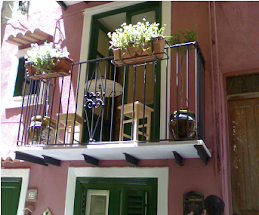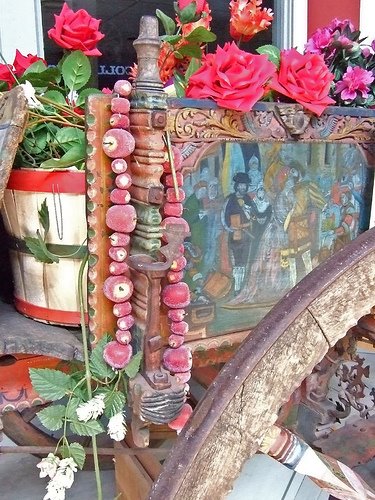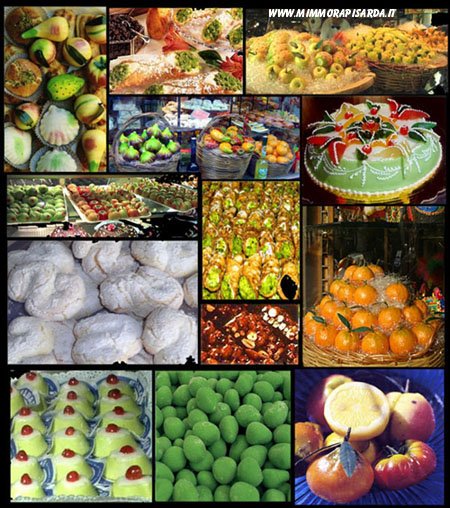 Image via Wikipedia
Image via WikipediaSS 117 bis km 60 - Piazza Armerina (EN)
+39 0933 970898 / +39 0933 979092
1 out of 3 Stars
Accommodation: 100 euro per couple
Dinner: 3 course meal, typical Sicilian ; 60 euro for two including wine
After being recommended in both the Lonely Planet Guide and the Touring Club of Italy - Guide to Sicily, both reputable and independent publications, one would assume that this agriturismo would come out trumps, especially as it was located in one of the most fertile areas of Sicily, being Piazza Armerina.
Gigliotto was described in glowing terms by both guides mentioned above. One wonders if the authors actually stayed there. The experience at Gigliotto can only be described as disappointing for the discerning traveller. The place itself, a converted monastery was simply beautiful and stylishly restored. The immaculate gardens and surrounds had a significant amount of work done on them. The extension of the guest rooms external to the original monastery itself, were built in the style of the monastery and thus structural harmony was retained. The unobstructed views of a snow capped Mount Etna in the distance were priceless, while the plantations consisting of rows of prickly pears (fichi d'india) and olive trees gave the visitor a warm and uniquely Sicilian feeling.
The sad thing is that although the owner has obviously exerted considerable effort and energy in restoring this place and in creating a splendid location it is unfortunately let down by the management and of the quality of the produce and meals.
Upon arrival, we were greeted by the front desk manager who barely lifted his eyes from his sporting newspaper in order to greet us. The usual feeling of warmth and genuine social contact you seem to expect from Sicilian agriturismi was missing. It is the people, the characters, the stories and the local charm that draws you back to Sicilian agriturismi. Instead, at Gigliotto, there was the feeling of being in a place without a soul.
The room we were given was quite comfortable, warm and cosy. Mind you this was only after being initially shown to a room half the size with one quarter the window. The dinner was served between 8:00pm and 9:30pm and was simply not up to the standard Sicilian quality.
The caponatta, usually delicious, was largely bereft of the unique flavours that make it such a typical Sicilian dish. The rest of the antipasti was as inedible as it was uninspiring. The olives were great though. Then came the driest meat dishes I have ever been served in Sicily. The pork looked as though it had been cooked in the morning, refrigerated and then heated up that night (a practice that the staff admitted to doing for the veal). The lamb, while slightly more tasty still seemed like yesterday's leftovers. The only dish that was of any quality was the fresh aromatised, Sicilian sausages.
No dessert was served, instead we were "treated" with Oranges and Mandarines that were old, greying and dry. And this from the land of the Orange Groves! How you can manage to serve such poor quality oranges in a land where even the oranges left in the gutter retain a beautiful deep orange glow of freshness, is totally beyond me. The staff's protestations that the oranges were picked from the estate confused me further.
And the cost of this dinner - 30 euro per person! Sicily is a place where you would expect no more than 22 euro per person for dinner at an agriturismo and still eat like a local King.
The cost of the accommodation - 50 euro per person.
Overpriced for sure - and such a shame given the beauty of the location.

![Reblog this post [with Zemanta]](http://img.zemanta.com/reblog_c.png?x-id=ee27c922-3d10-44a2-a2ac-420ae2141989)

![Reblog this post [with Zemanta]](http://img.zemanta.com/reblog_c.png?x-id=af871dad-380d-4c97-bb8d-88cb48597784)

![Reblog this post [with Zemanta]](http://img.zemanta.com/reblog_c.png?x-id=4559f142-1d51-4396-aded-753c2bec8263)







